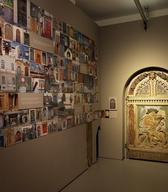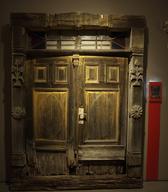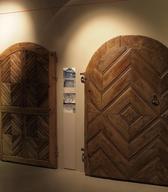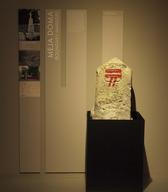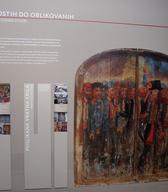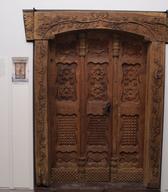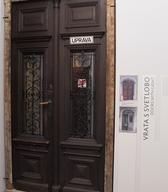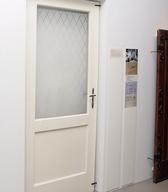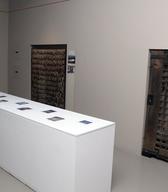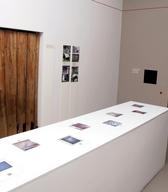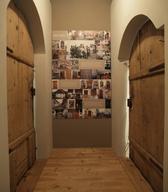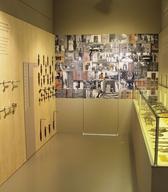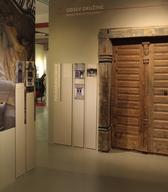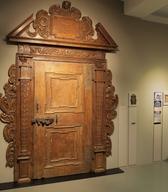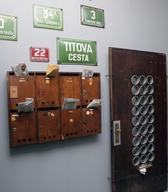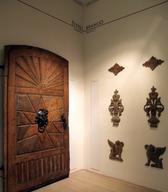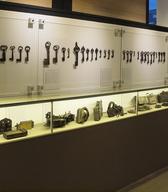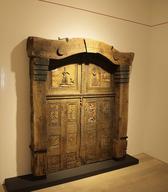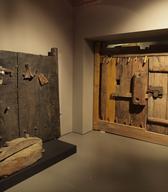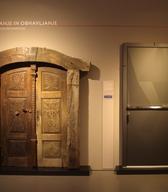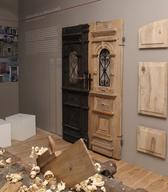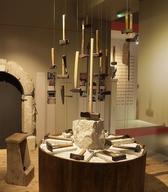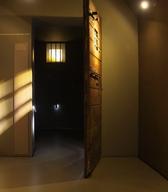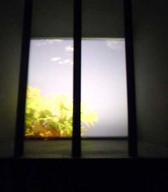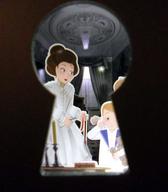Doors. Spatial and Symbolic Passageways of life.
Exhibition on the occasion of the 90th anniversary of the Slovene Ethnographic Museum
Doors. Doors? Doors!
Do we really think about doors − do we know them and recognise them as faithful companions through life? Or are they simply there, and when they open or close we recognise what they mean. Perhaps we sometimes pause in front of one and wonder how to enter, who is concealed behind it and what awaits us on the other side. Do we often open them wide and shut them tight? Doors are connected with man‘s natural need to organise and divide space. The word door comes from the Indo-European root uer− meaning to close, to cover. In many languages, such as Slovene, the word for ‘door’ is plural, as doors are often double. As an architectural feature, the door developed into a framed opening with a threshold and a door with hinges. The oldest doors in Slovenia were wickerwork or solid wood without pictures or carving. They had a wooden frame and a door made from panels, connected by tongue and groove joints. Examples of these oldest doors can still be found on some functional and residential buildings. By the 19th century most entrances to houses had single doors that opened inwards, whereas courtyard doors in the 18th and 19th centuries were double. In the 18th century, door design gradually evolved to incorporate carving and, more rarely, painting and beaten metal.
The exhibition stretches from the oldest known doors, keys and locks preserved in museum and private collections to the most up-to-date examples. Doors guide visitors to different parts of Slovenia to families of different professions and social origins. They tell numerous stories about those who made them, those who lived behind them, about the rise and fall of families, the development of homes, about what we understand by privacy, openness and closedness, and so on − festive stories and everyday stories.
Entrance doors of varied design, wooden, stone portals, interior doors, doors from functional buildings and prison doors testify to their protective, communicative and symbolic role. The exhibition includes the production of doors, keys and locks, as well as showing stone carving tools.
Numerous objects are supplemented by audio-visual records of doors and locks being made, and of customs and habits connected with doors. Doors are also presented as symbolic passageways between spaces, worlds and states, between life and death, between the known and the unknown, light and dark, wealth and poverty, the everyday and the mysterious or holy, between us and others, what is ours and what belongs to others. There are many connections with life’s milestones and the transition between seasons. The symbolic power of doors is captured in beliefs, customs and habits, proverbs and sayings, as well as in common law. They are connected with wisdom. The exhibition is enriched by poems and songs, prose texts, and the work of painters and sculptures who were inspired by doors. A similar symbolic meaning to doors is held by keys and thresholds. The exhibition reveals numerous aspects of doors as points of entry and symbolic passageways.
Doors are a part of life. We encounter them daily, observe them, touch them countless times, open them with respect, with expectation, with reserve, with curiosity, hide behind them or reveal ourselves. To have a door means to have a home, safety, a place where you belong. Doors invite us to enter; they are a path, a passageway from birth to death. We acquire them when we enter the world and depart through them when we pass to the other side. When open, they represent an opportunity, hope; when closed, privacy, a feeling of peace or of disappointment and claustrophobia. Perhaps the doors in the exhibition and their stories will lead you to some realisation about the doors in your life. Through a labyrinth of doors you will cover the path you have taken, from the door to life onwards. Get to know these known-unknown companions of life and let your path bring you to the door to the future ... But what waits behind it?
Polona Sketelj, M.A., exhibition curator


